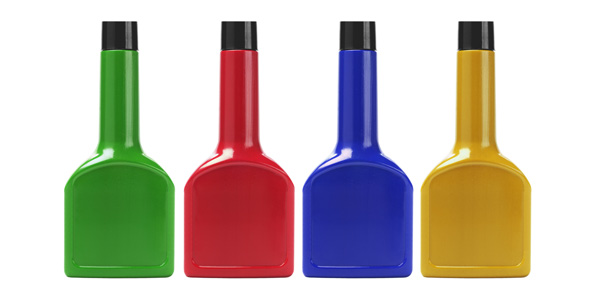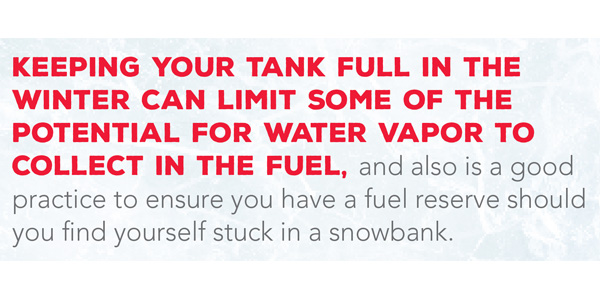
By now, a good portion of U.S. drivers are well-equipped with snow tires, winter wiper blades and ice scrapers. Temperatures have dropped, the plows are out and technicians are suffering through flat-rate hours spent under vehicles dripping with snow and ice. This also is the time of year that we Northerners have begun to sell winter-related fuel system chemicals. Traditional winter items always have included fuel-line antifreeze (dry gas) and diesel anti-gel, but winter can have additional effects on flex-fuel vehicles.
The phrases “dry gas” and “fuel-line antifreeze” are used to market additives intended to prevent water from freezing in fuel lines and tanks. The active ingredients in these products are alcohols, usually ethanol or isopropyl alcohol. One of the chief complaints of the “anti-ethanol” crowd is phase separation. Phase separation occurs when the ethanol in the fuel absorbs the maximum amount of water it can carry, and this water separates out of the mixture and sinks to the bottom of the fuel tank or storage container. This water can freeze inside the fuel pickup or fuel line, preventing the vehicle from starting in cold temperatures. Methanol or isopropyl alcohol can lower the freezing point of this water, keeping fuel lines flowing. In this case, the answer to the ”problem” of ethanol in your fuel is … a different kind of alcohol!
In many states that see below-freezing temperatures, the winter use of E85 ethanol fuel also causes cold-start problems. The flash point of ethanol is about 56 degrees, making it harder to ignite at low temperatures. In comparison, gasoline has a flash point of 45 degrees below zero! To help solve these cold-start issues, many manufacturers now offer engine-block heaters for their E85 vehicles as well as their diesels. Fuel companies also engage in a bit of “false advertising” when winter-blend fuels replace E85 at the pumps for a few months out of the year. The actual ethanol content of this winter blend is closer to 70 percent, eliminating some of the problems associated with E85.

Dropping temperatures can cause condensation in both vehicle fuel tanks as well as the storage tanks at your local gas station. Although modern vehicles have a sealed fuel tank, many “winter beaters” are older vehicles, often with less-sophisticated emissions systems. Keeping your tank full in the winter can limit some of the potential for water vapor to collect in the fuel, and also is a good practice to ensure you have a fuel reserve should you find yourself stuck in a snowbank.
While water is the primary enemy of gasoline and ethanol fuels, diesel fuels are affected by freezing water as well as thickening of the fuel itself. At temperatures below 32 degrees, paraffin waxes in the diesel fuel begin to crystallize, eventually thickening (gelling) at 10 to 15 degrees and plugging the fuel filter and lines. Anti-gel additives, when used as preventative maintenance, can keep diesel fuel flowing, and also help displace water from the fuel. Emergency additives can liquefy already-gelled fuel and de-ice frozen filters and lines, but rarely can be used as a preventative anti-gel.
As the winter months drone on, we will see more and more stranded motorists with fuel-related breakdowns. Preventative maintenance always is the best way to guard against these cold-weather problems, but keeping a strong supply of winter fuel-treatment chemicals still can be helpful to your customers – and profitable for your store.







